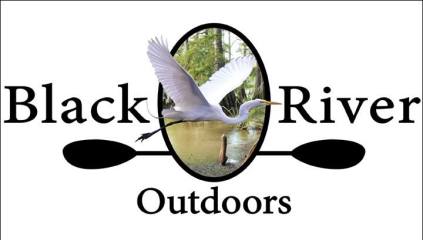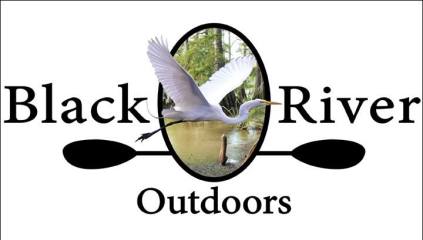Black River Outdoors Guides Travel to Costa Rica

You may have noticed that we have been little quieter on our social media pages in the past few weeks. This past September, our area experienced catastrophic flooding from Hurricane Florence that brought our kayak tour operations to an unfortunate halt. After the storm, we were only able to reopen our Salt Marsh Tours. We were not able to offer Cypress Swamp Tours right away due to unsafe water conditions on the Waccamaw River. Last month, the Waccamaw reopened for recreation, and we paddled out on a few Cypress Swamp Tours in Conway, and Sandy Island Tours in Murrells Inlet. As you can imagine, we were relieved and thankful to be able to offer all of our Guided Kayak Eco Tours and Pro Fishing Trips! Until last week when major flash flooding caused our fresh water rivers to rise again and generate fast moving, unsafe currents. Currently, we are only able to offer Salt Marsh Tours and Pro Fishing Trips. We anticipate that the flooding will reside quickly, and we will be able to offer our Cypress Swamp Tours in the near future.
While the hurricane and river closings have slowed down our kayak operations, that’s not why we have been so quiet in recent weeks on social media. For the last two weeks a couple of our guides, Amanda and Paul, have been busy leading a 12 Day Guided Eco Tour to Costa Rica through our sister company, Epic Nature Tours! Since it is a family business, of course Richard and Frankie had to support their son Paul and his wife Amanda in this big adventure by traveling as guests on the tour. Not a bad excuse to take a two week vacation to the tropics, right?!
Where We Explored: A Snapshot of the Itinerary
The adventure began on the Southern Caribbean coast of Costa Rica near the border of Panama in a quaint little fishing town called Manzanillo. Here, guests explored the Primary and Secondary Rainforest of two National Parks, the Gandoca-Manzanillo National Wildlife Refuge and Cahuita National Park. Everyone had fun spotting monkeys, sloths, toucans, iguanas, poison frogs, eyelash vipers, tarantulas, parakeets, macaws, and more! The rainforest is home to a wide variety of tropical animal species.
Ara Great Green Macaw Reintroduction Sanctuary
We had a blast visiting a Great Green Macaw reintroduction facility called the ARA project as we were warmly welcomed by dozens of macaws in every direction we turned. The ARA Project reintroduces Great Green Macaws on the Caribbean coast, and on the Pacific coast they work with Scarlet Macaws. Both species are at risk of extinction due to the illegal pet trade market and deforestation. Every afternoon the Macaws flock to the ARA Project station to feed on wild almonds collected off the sandy beaches and jungles of the caribbean by ARA volunteer staff members. The almonds are placed on feeders suspended high on trees throughout the property. Guests of ARA are able to stand on a nearby observation deck to watch and photograph these big green birds unobtrusively as they interact, feed, and play.
Indigenous Bri Bri Village & Chocolate Making
One of the coolest experiences our guests had on the trip was an overnight stay with an Indigenous family in the Bri Bri village of Yorkin. The group is known as Aventuras Naturales. Our 12 person group began the trip by boarding two small motorized dugout canoes for an hour and half long journey up the Yorkin River to the small village of Yorkin. The Yorkin River is the natural border between Costa Rica and Panama and is known to be home both crocodiles and caiman. The canoes each had two Yorkin men operating the boat; one to operate the motor, and the other to navigate the boat through the rapids using a large hand carved stick paddle. Along the way we spotted Amazon Kingfishers, Osprey, hummingbirds, and other kinds of river life. Once we arrived at the village, Seniora Otilia, the Chief of the small village, gave our guests a grand tour of her active organic Cacao farm that fuels the sustainability of the Yorkin Community. During the tour, our guests were able to eat raw cacao fruit, then watch and participate in the chocolate making process. The best part was at the end when everyone got to taste fresh, 100% dark chocolate right off the chocolate grinding mill that was drizzled atop of organic bananas and served on a banana leaf. We learned that chocolate is a very sacred fruit to the Bri Bri. This was a truly authentic experience like no other! After chocolate making, we made our way to our tent beds situated inside a 5 story, open air round house with thatched roofs. The house reflects a traditional Bri Bri architectural style and was designed by Seniora Otilia’s husband who passed away 3 years ago. Seniora Otilia has her family are passionate about continuing to drive her husbands vision of sustaining their community and heritage through eco tourism.
Ancient Ruins and Volcanoes
During the second half of the tour we drove up the winding narrow roads leading up to the Guayabo National Monument, one of the oldest ancient ruins in Costa Rica. We then continued even higher to the active Irazu Volcano. The volcano hasn’t erupted since the 1960’s so we were able to get spectacular views of its craters, including the primary crater known as the “Green Lake” for its bright green color. It felt like we were all on a completely different planet while walking through the black sediment and arid sparse vegetation, ground level clouds, and the bone chilling temperatures. Not to mention the eerie feelings we all got when we drove through a small ghost town near the neighboring Turrialba Volcano that had been evacuated due to its constant eruptions.
High into the Cloud Forest
We ended the trip on a high note, around 11,000 feet above sea level in the Los Quetzales Park. We stayed at a charming and exquisite local ecolodge called Savegre Hotel, located a few thousand feet lower in a little town called San Gerardo de Dota, which is nested in the Savegre Valley. Savegre Hotel is situated in a beautiful flower garden and offers private tours of their newly established Batsu Garden. Batsu means humming bird in the Bri Bri language, which is very fitting because you are able to watch and photograph dozens of humming birds buzzing around you while visiting the Batsu Garden. The Savegre River flows swiftly through the valley to the mouth of the Pacific. We thoroughly enjoyed bird watching for the over 200 different species known to inhabit Los Quetzales. In addition, the Savegre River is one of the most pristine rivers in Central America!
The Magic of the Resplendent Quetzal
We spotted many different kinds of hummingbirds including the Volcano, Mountain Gem, Violet Eared, Talamanca, and Scintillant. There were a plethora of Acorn Woodpeckers, Tanagers, and Warblers as well. However, the bird we all came for was the Resplendent Quetzal. A bird that was revered as a God by the Ancient Mayans. Thousands of birders flock to the Savegre Valley each year just to see the Quetzal, and we were very fortunate to see both the male and female during our visit to the valley. Quetzals primarily feed on wild avocados in the Savegre Valley. These are not the same avocados us humans eat. They are much, much smaller. In fact, watching a Quetzal eat one of these avocados is quite impressive! The Quetzal will swallow the avocado whole, absorb the flesh and nutrients, and within the half hour will then regurgitate the entire seed. While the Quetzal is a majestic looking bird in the sunlight, with its gem-toned feathers and dramatic long tail, Quetzals are actually dark brown in color. The magnificent coloration comes from melanin that only comes to life and is seen by the human eye when the Quetzals are exposed to sunlight. Interestingly enough, Quetzals do not like too much sunlight, and often spend most of their time camouflaged deep in the Cloud Forest. So that makes spotting a Quetzal very tricky. The key to seeing a Quetzal is catching them in the right place and the right time of day. Quetzals are not nocturnal, however they are very early birds. In fact, you usually won’t see a Quetzal too much longer after the sun rises. That’s why when you actually do see a Quetzal for the first time, you are left with a magical, warm and fuzzy, tingly kind of feeling that equates to seeing a mythical fairy. Or something like that… In other words, Quetzals are a truly spectacular bird sighting for birders and nature watchers alike.
A Word from the Trip Leaders…
If you have never been to Costa Rica, or you have been but are looking for an Epic adventure like no other, consider booking a tour with Epic Nature Tours, and let us show you the real Costa Rica. Amanda and Paul Laurent are the trip leaders and expert naturalist guides at Epic Nature Tours. Our travel groups are small and intimate in size with a maximum of 10 guests per tour to give you a more personalized experience. On our trips, our guests are able to bond and make lifelong friendships. We stay at small, locally owned eco lodges that are tried and trusted. You won’t find a Marriott or Wyndham on our itinerary. We eat at mom and pop style restaurants called “Sodas,” serving only the best and freshest foods. Our tour guides are all local, Costa Rican Board of Tourism Certified guides and are bilingual. Our next tour will take place from February 1 – 8, 2019 and is called the Chocolate and Coffee Tour.
Check it out at: www.EpicNatureTours.com/chocolateandcoffeetour
For more information about Epic Nature Tours:
Epic Nature Tours
(931) 452-9254

